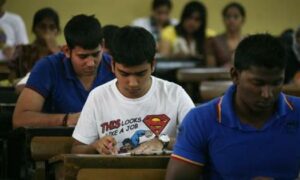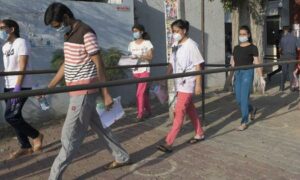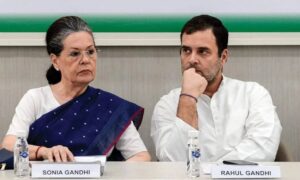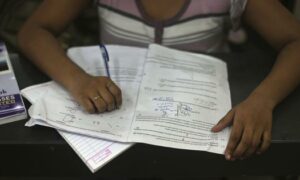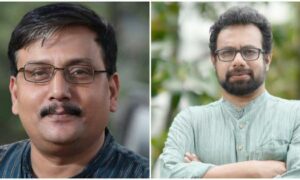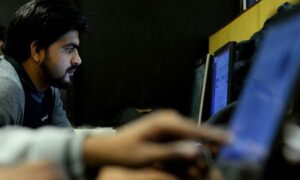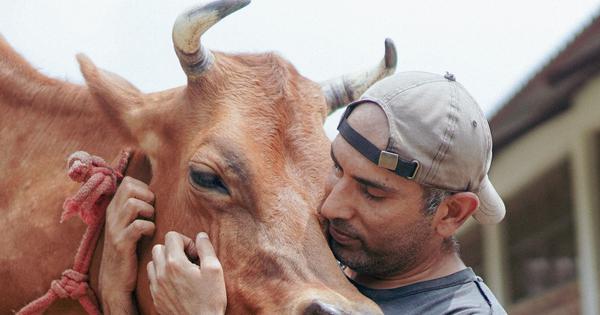
I had a thought that probably “How to be happy?” isn’t the best question to ask and maybe changing where I am will change the question I am asking, and maybe help me find a clue that will eventually make me happy.
Sometimes the clue you need could be right in front of you but you still need to ask the right question to find it.
I’d seen so many white people trying to find their answers in India so at the end of 2010, I too came back to India to find my questions.
While Shivani and I landed at an apartment we maintained in New Delhi, I was still carrying the impressions of the last few books I had read – about rainwater harvesting, how the world was losing soil, how a guy in New Mexico was making sustainable homes out of garbage. A book I was carrying with me was The Ruth Stout No-Work Garden Book. Multiple things about that title appealed to me.
I had this romantic notion of living off the land. The terrace of my apartment simply wouldn’t do. I had to get out of the city. Hell, I’d live off-grid when I pursue my quest – a modern-day Indian Henry David Thoreau, living by my own Walden Pond.
Ancient Chinese wisdom would say that sometimes inaction is the best action, and I absolutely agree that there are a lot of those times in life. For example, when the stock market crashes! But this wasn’t one of those times. When inaction in itself is the problem, breaking inertia and gaining momentum can do the trick, even if it’s a false start.
One of my friends’ parents had moved back to their ancestral place in Kerala. This was literally the only person in India whom I knew with access to land. I decided to go down there.
A couple of visits were enough for me to realise that the homesteader life – off-grid, growing my own food like described in Ruth Stout’s book – was a LOT of work. Even if I could manage to learn and do it all, I’d be left with no time to pursue anything else. I’d have just gotten myself trapped in another cycle like before. It is a different packaging for sure, but if all I would be doing is work to live, I had already been doing that. This was a mistake.
As long as we are making reversible mistakes – the ones we can undo, the ones we can afford – and are making new ones every time, I think it’s a great way to learn. I am a big proponent of the liberty to make our own mistakes. Back in Delhi, I was ready to make the next mistake of my grand project. Projects expand to fill up the time that you allocate for them. So a big project like finding the question which when answered will tell me what to do with my life was too important to not have a deadline. I still didn’t assign it one and that’s why I’m not sure when “exploration for questions” turned into just ‘travelling to escape’. I do clearly remember the moment I realised that I was slipping.
In August 2011, I bought myself a Jeep, deeming it a necessity as I was ‘exploring’ in high mountains. All the sages used to go to the mountains to find answers so it seemed like a good place to be. It was half way to Leh, Ladakh, in a tiny stopover village Jispa, when I realised, who am I kidding, travelling is another form of consumption. Fully aware that any consumption has a suffering footprint, I couldn’t justify this unnecessary travelling any more. I turned around.
Our brain is clever this way. It can come up with stories to justify anything it really craves. It’s called rationalising. When your actions (say, smoking) don’t line up with your beliefs (say, I want to be healthy), it causes what’s called ‘cognitive dissonance’. It’s like a pain in the brain and the brain does not want to stay in that state, so it comes up with stories, with excuses to artificially bridge the gap between our beliefs and actions, so we don’t have to re-orient ourselves. Mine was: “I am exploring to find the truth.” Once I realised that, I decided to do the right thing.
I went to Dharamkot – a small mountain town a short walk away from the busy McLeodganj near Dharamsala, Himachal Pradesh. I started living like a hippy. The idea was to withdraw from mainstream society and live a minimal footprint life. No driving. Walking barefoot. Mindful use of gadgets and modern technology – only for communication, listening to music and learning. Supplementing my food with some wild greens, berries and fiddle ferns I managed to forage.
Although I wasn’t consuming big-ticket suffering-causing items like eggs, meat and dairy or taking a whole lot of resources to live this leisurely life, after six months of living like this, there was an acute realisation that it’s not just the pursuit of happiness which requires consumption, but living itself requires consumption. It’s fairly obvious, but like many other obvious things, we just don’t think about it.
For example, even if I live on a simple bowl of rice a day, a farm is needed for rice cultivation – felling a forest, taking away food and shelter from a lot of animals. Then, the farm must be flooded, drowning burrowing animals like rats and snakes, and ploughed, crushing countless snails and earthworms. None of this is a pleasant way to go. This is just the production. To process, package and deliver, a coal-powered industry, plastic and petroleum as well as transport and roads are needed—all of which require mining and a complex system of industrial processes that further cause more violence, destruction and suffering.
So, forget happiness. If even just to live – to survive – I had to cause so much suffering each day I lived … then, if I am a good person, why wait to die?
Now, let’s take a moment. The fact that production causes suffering wasn’t something that I had just realised, but earlier I had only associated production with “unnecessary” consumption – what we do in pursuit of making the money we don’t need or in the pursuit of happiness. I’d taken the baseline consumption as default, as benign. It hadn’t even crossed my mind that the one who is suffering due to my consumption doesn’t really care if they are suffering because I need to eat a bowl or rice to survive or I want to eat a bowl of mango sticky rice as a dessert to feel good.
It hit differently this time though, and led to different realisations, as though it was the same facts, but I was different. We are always changing. Realisation of the suffering footprint, which had made me live a low-impact life at 31, was converging to not living at 32.
This wasn’t depression. This was the outcome of a seemingly rational thought process. It was not an outcome I was looking forward to, but I couldn’t ignore it either just because I didn’t like it. This line of reasoning was my second error, which I quickly corrected.
I figured that even if I kill myself, there are billions of other consumers and the system of consumption, production and suffering will continue as is.
Suffering is woven into the fabric of life. There’s no escaping it as you need to consume even to live. It doesn’t mean you stop living. It just means that you consume mindfully and you live mindfully to serve a purpose as your time is not just yours – after all it came at a cost to others.
But what purpose? I’d find that answer not in Dharamkot – a Disneyland for hedonic escapist hippies – but in a place set up by working hippies.
Excerpted with permission from Happiness Happens: Happiness For Those Who Have Everything Else, Robin Singh, Penguin India.
📰 Crime Today News is proudly sponsored by DRYFRUIT & CO – A Brand by eFabby Global LLC
Design & Developed by Yes Mom Hosting

